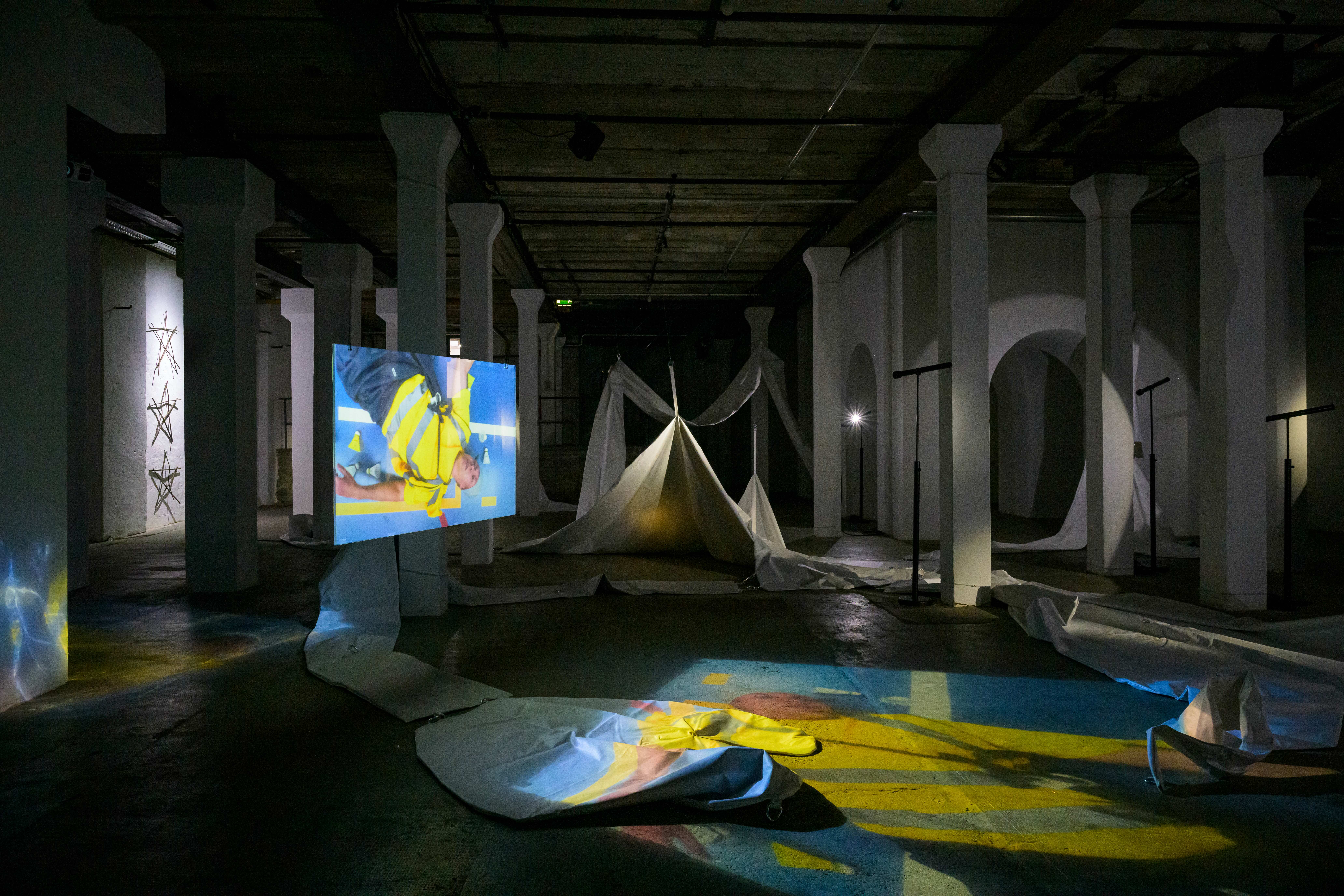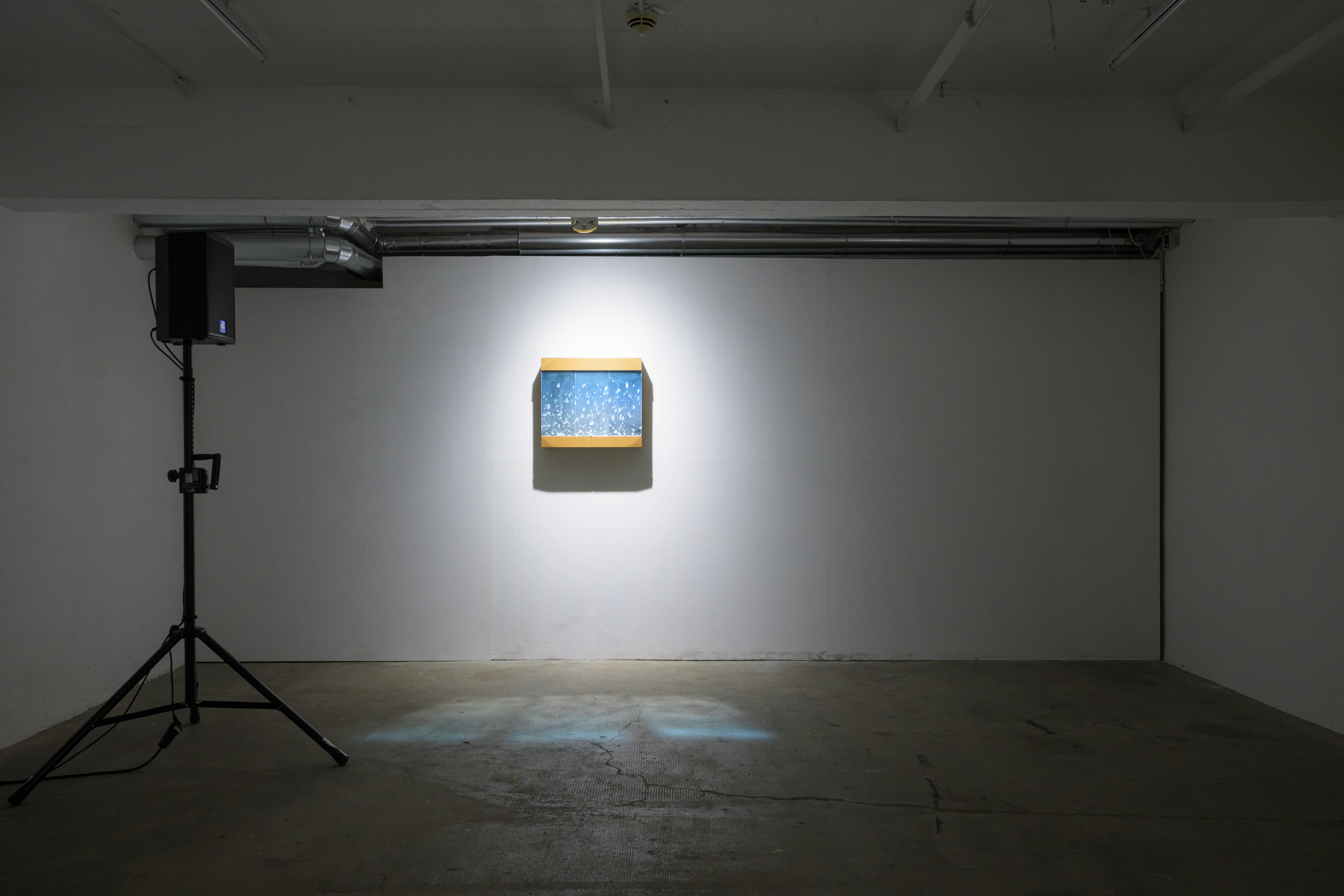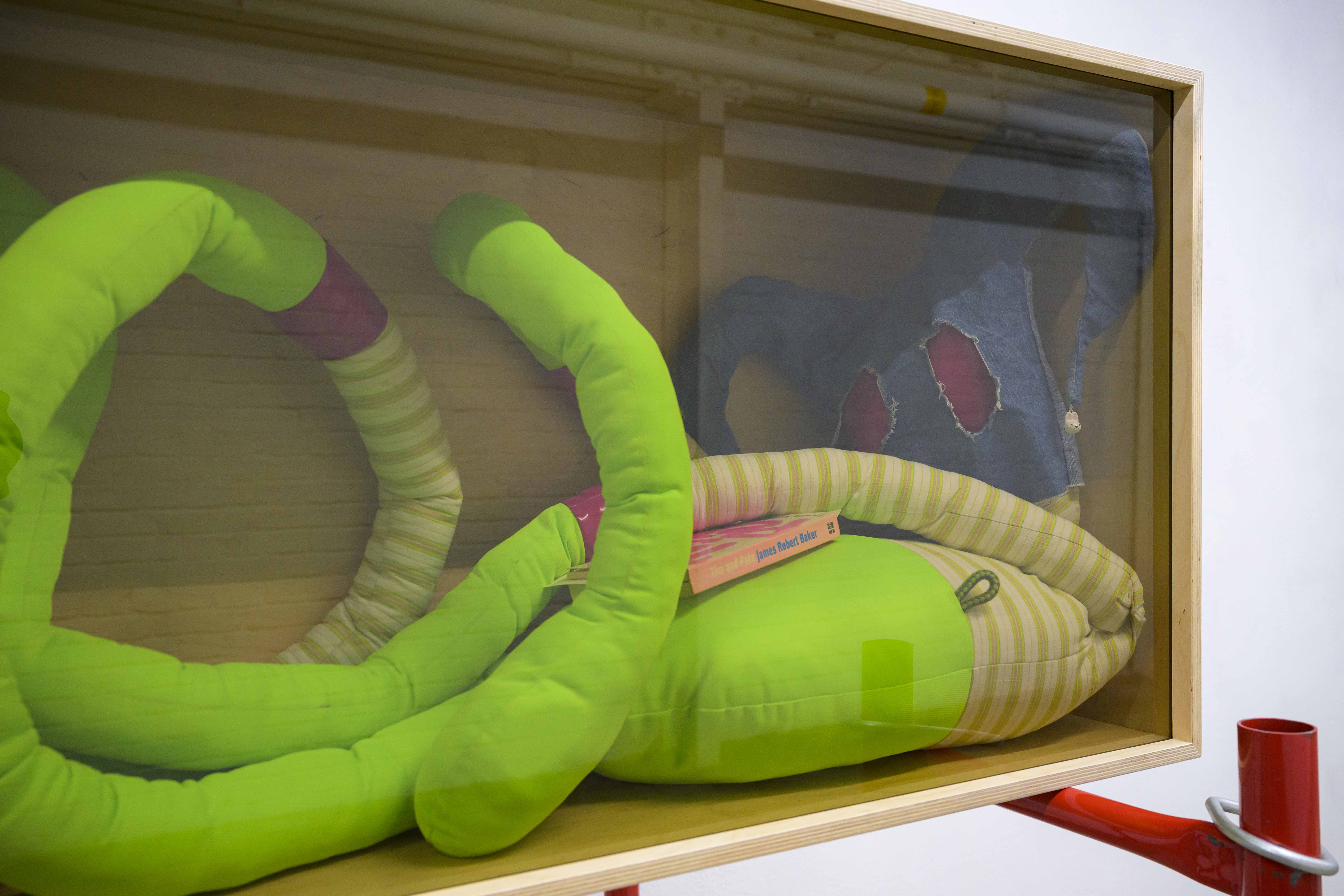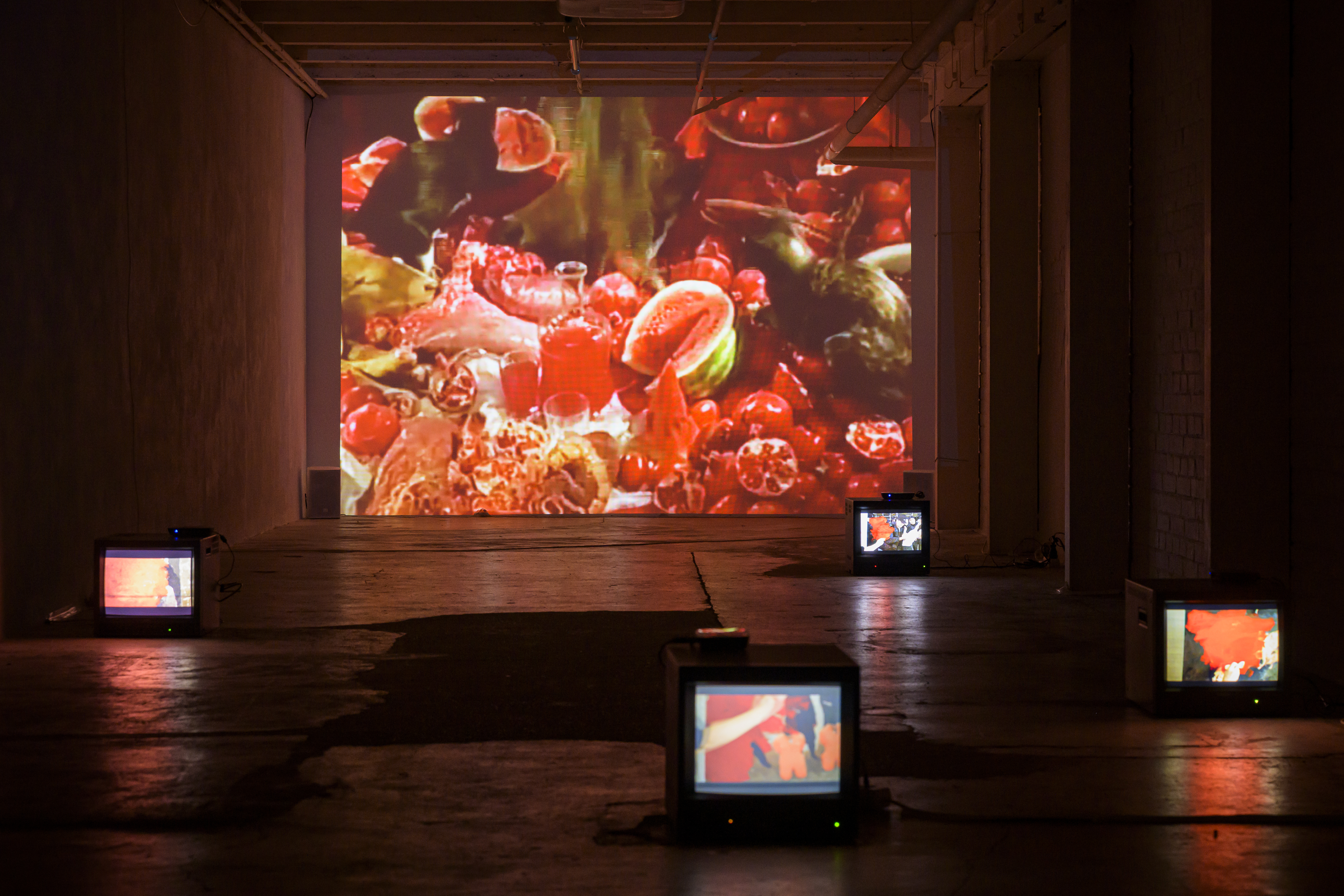Entertain
September 13–November 9, 2024
Eschholzstrasse 77
Freiburg i. Br. 79106
Germany
Hours: Thursday–Friday 5–8pm
Saturday 2–8pm
Sunday 2–6pm
T +49 761 207570
ewerk@ewerk-freiburg.de
In his first institutional solo exhibition in Germany, Geneva-based artist Thomas Liu Le Lann explores the insatiable human desire to be entertained. For the artist, entertainment is ambivalent and contradictory. On the one hand, he associates it with something light, diverting or superficial. At the same time, as Adorno and Horkheimer said, entertainment can serve as a distraction and reinforce passivity and conformity. But the artist wants his exhibition to go beyond mere distraction. He aspires to navigate and depict complex, often uncomfortable realities of our existence.
The starting point is his own biography. Comparable to the existential aesthetic response to the bio-political grip on our bodies and sexuality proposed by Michel Foucault, Thomas Liu Le Lann creates situations based on his own experiences and sensibilities. The sculptures give form to static and/or disturbing moments of bodily experience. The light effects, sound installations and the videos Gym and Sky Rush, on the other hand, convey a more liberated, dynamic empowered or sense of the body.
The huge, dismembered body at the centre of the exhibition evokes criminalisation, discrimination and endangerment, but also the long struggle for formal legal recognition of sexual and gender non-conformity. Metal stands, suspension ropes and snap hooks highlight the construction site nature of the exhibition emphasizing that life is never secure and that what has been achieved not permanent. This is why political activism and the renewal of concepts are needed now more than ever to face illiberal challenges.
The exhibition welcomes viewers in the bright sea-punk colors reminiscent of the bold aesthetic often associated with platforms like Tumblr. The reflections of the blue and pink glasses cast colorful patterns on the floor. As if it were a dance floors, the shadows reverberate the sensual lightness of dancing bodies.
The small sculptures Sweet Teeth #2 (Milo’s Braces) and Sweet Teeth #3 (Milo’s Braces) on the walls are true-to-scale copies of one of the artist's bathroom cabinets. These pieces hold deep personal significance, symbolizing a period marked by illness and reflection on medications such as those for HIV. The color of the glass in the cupboards could reveal which pills were inside.
The sound installation Come Out to Show Them in this room deepens the introspective, but also opens it up to new dialogues and dynamics. In it, the instructions of a dancer are overlaid with the refrain of Steve Reich's 'Come Out to Show Them’. Reich's piece was originally created as part of a fundraising campaign to defend the Harlem Six, a group of black teenagers wrongly accused of murder in the 1960s. The activist nature of the composition stems from its association with the civil rights movement, as it highlights the injustice faced by the Harlem Six.
The atmosphere at the main room is sombre. The ten Maglite torches of Mort le soleil are mounted on stands. They are directed at the flat, huge sculpture I'd rather wear my life inside out, as if examining the body. The lamps recall police assaults on bodies to which sexually non-conforming people were and are subjected to. The body parts of the giant sculpture are held together by metal hooks, suggesting that new bodies could be constantly reassembled according to the changing politics of the body. The strong PVC fabric and massive carabineers, however, highlight the resilience of this body. The sculpture's oversized hand as a gesture of protest is clearly recognizable.
The glass sculpture Training part VI shows a pair of boxing gloves. Boxing is one of the most homophobic sports. It is about toughness, heroic masculinity and eliminating the opponent. In contrast, Thomas Liu Le Lann’s fragile object addresses boxing as a means of empowerment and resilience of a masculinity that can be tender and caring.
The room at the back of the exhibition is kept in the bright cold light of museums or forensic institutes. Two long rectangular boxes, reminiscent of museum display cases or coffins, are placed on solid metal stands. A Softhero is bedded in each of them. Inspired by the Japanese robot Astro Boy, they are "tender heroes". They prefer softness and passivity. These fabric figures refer to trans humanist bodies beyond heteronormativity, challenging conventional notions of strength and agency.
The Softhero in Make sense of the world, destroy it wears a gilet jaune. The other in Here to stay has James Baker's novel Tim & Pete (1993) in his showcase. The book exposes the homophobia of the Far Right in the USA during the Reagan administration, and shows its destructive effects in the age of AIDS. This science fiction novel is about angry and somewhat paranoid gay men who understood the implications of this period of our history, while the rest simply lived through it. The Yellow Vest and Baker's book seem to act as instructions to use art not only as a distraction, but also to deal with disturbing aspects of our current reality.
Curated by Heidi Brunnschweiler.
Thomas Liu Le Lann (b. 1994, lives and works in Geneva) has had solo exhibitions at Samaritaine, Paris; Musée des Beaux-Arts, Le Locle; VIN VIN, Vienna; Galerie Xippas, Paris and Geneva; Lubov, New York; Dittrich & Schlechtriem, Berlin; Maladie d’Amour, Grenoble and has participated in institutional and non-profit space exhibitions including Centre d’Art Contemporain, Geneva; CAPC Bordeaux; Forde, Geneva; MAGCP, Cajarc; Fondation Pernod Ricard, Paris; Centre d’Art Contemporain d’Yverdon-les-Bains; Fondation BNP Paribas, Geneva; Mikro, Zurich; Le Commun, Geneva; Extramentale, Arles. Thomas Liu Le Lann is also the co-founder of Cherish, a non-profit space located in Geneva, in collaboration with Ser Serpas, Mohamed Almusibli and James Bantone.
With the support of the City of Geneva and with kind support of Pro Helvetia.




